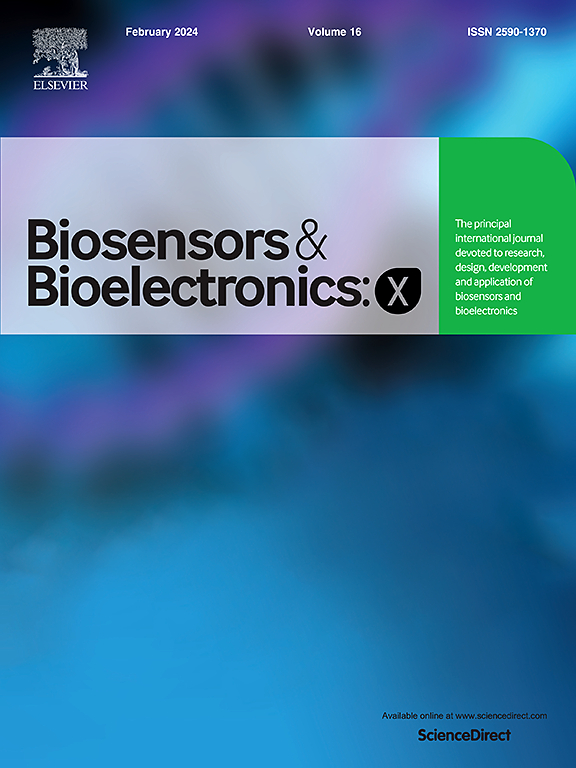Feasibility study of a smart insole with triboelectric energy harvesters for early flatfoot detection
IF 10.61
Q3 Biochemistry, Genetics and Molecular Biology
引用次数: 0
Abstract
This study introduces a self-powered smart insole system designed for real-time monitoring of foot health, with a specific focus on detecting flatfoot conditions. The insole integrates multiple identical triboelectric energy harvesters strategically positioned to capture electrical signals generated from ground reaction forces during daily activities such as walking, jogging, and running. Proof-of-concept testing was conducted on a single participant under two conditions: a healthy foot and a simulated flatfoot created by reducing the medial arch height by approximately 70%. In the healthy foot trials, the system demonstrated consistent and reliable performance, with negligible electrical output from the medial arch sensor due to minimal ground contact in this region. In contrast, the simulated flatfoot condition produced a significant increase in voltage output from the medial arch sensor, successfully identifying the abnormal foot mechanics associated with arch collapse. Additionally, a neural network was implemented to classify healthy and flatfoot conditions from the collected data, achieving an accuracy of 86% and a precision of 96%, demonstrating the feasibility of machine learning integration for automated flatfoot detection. Overall, the findings validate the smart insole’s capability as a promising tool for continuous foot health monitoring, early diagnosis of flatfoot, and future applications in personalized rehabilitation and preventative care.
带摩擦电能量采集器的智能鞋垫早期平足检测的可行性研究
本研究介绍了一种自供电智能鞋垫系统,旨在实时监测足部健康,特别关注检测平足状况。鞋垫集成了多个相同的摩擦电能量收集器,策略性地定位于捕获日常活动(如散步,慢跑和跑步)中地面反作用力产生的电信号。在两种情况下对单个参与者进行了概念验证测试:健康足和通过将内侧足弓高度降低约70%而产生的模拟扁平足。在健康足部试验中,该系统表现出一致和可靠的性能,由于该区域最小的地面接触,内侧足弓传感器的电输出可以忽略不计。相比之下,在模拟的平足条件下,内侧足弓传感器输出的电压显著增加,成功地识别出与足弓塌陷相关的异常足部力学。此外,利用神经网络从收集的数据中对健康和平底足进行分类,准确率分别为86%和96%,证明了机器学习集成用于自动平底足检测的可行性。总的来说,研究结果验证了智能鞋垫作为一种有前途的工具的能力,可以持续监测足部健康,早期诊断扁平足,以及未来在个性化康复和预防性护理中的应用。
本文章由计算机程序翻译,如有差异,请以英文原文为准。
求助全文
约1分钟内获得全文
求助全文
来源期刊

Biosensors and Bioelectronics: X
Biochemistry, Genetics and Molecular Biology-Biophysics
CiteScore
4.60
自引率
0.00%
发文量
166
审稿时长
54 days
期刊介绍:
Biosensors and Bioelectronics: X, an open-access companion journal of Biosensors and Bioelectronics, boasts a 2020 Impact Factor of 10.61 (Journal Citation Reports, Clarivate Analytics 2021). Offering authors the opportunity to share their innovative work freely and globally, Biosensors and Bioelectronics: X aims to be a timely and permanent source of information. The journal publishes original research papers, review articles, communications, editorial highlights, perspectives, opinions, and commentaries at the intersection of technological advancements and high-impact applications. Manuscripts submitted to Biosensors and Bioelectronics: X are assessed based on originality and innovation in technology development or applications, aligning with the journal's goal to cater to a broad audience interested in this dynamic field.
 求助内容:
求助内容: 应助结果提醒方式:
应助结果提醒方式:


